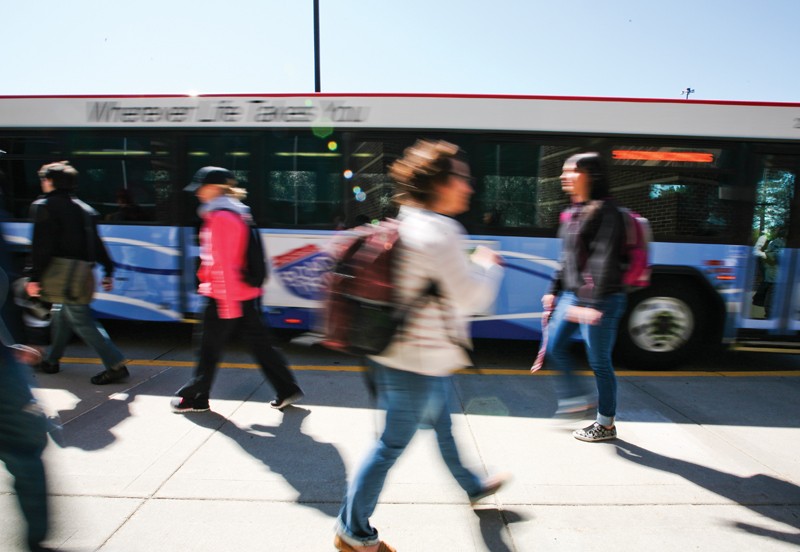GV joins U.S. public transit research

GVL / Robert Mathews Students loading and unloading at the kirkhof bus stop. GVSU is one of 9 schools in the nations participating in transportation research currently.
Apr 11, 2012
Grand Valley State University’s Padnos College of Engineering and Computing will be participating in a government-funded transportation research project with eight other public universities across the nation.
Charles Standridge, assistant dean of PCEC, said GVSU was invited to participate in the research project after having already been a part of an existing coalition of universities called the Michigan-Ohio University Transportation Center, which included the University of Detroit-Mercy, University of Toledo, Bowling Green University and Wayne State.
The U.S. Department of Transportation then established the National Transit Research Consortium in a recent congressional bill and awarded it a two-year, $3.49 million grant in February. The money will be used to fund the research, as well as education, technology transfer and workforce development in the area of public transit.
The NTRC, headed by the Mineta Transportation Institute (MTI) of San Jose State University, includes Rutgers University, Howard University, University of Detroit Mercy, Bowling Green State University, University of Toledo, University of Nevada and Pennsylvania State University.
The research project has different divisions that will be taken on by each university.
According to the MTI website, “The consortium’s particular areas of expertise include alternative fuels, safety and security, public policy, finance, workforce development, livable communities, environmental sustainability, economic competitiveness, new modes, and many other critical factors essential to sustainable mobility.” The website added that these factors unite diverse aspects of public transit and allow for a more coordinated approach to researching and improving current transportation issues.
GVSU’s research will be “concerning the remanufacturing, recycling and disposal of lithium ion batteries [in buses and automobiles],” Standridge said, adding that GVSU was selected to participate because of its location in West Michigan and ability to contribute to the engineering part of the project.
The new battery plants in Holland give GVSU faculty and students easy access to the batteries, and will allow them to conduct thorough research more efficiently than other universities could.
“West Michigan is a leader in lithium ion battery manufacturing,” Standridge said. “It only makes sense to research right where the batteries are being made.”
The PCEC has not yet developed a research plan, but Standridge said he is currently working on one and will be ready to implement it in about a month. Part of the plan involves the Michigan Alternative and Renewable Energy Center (MAREC), which the will be useful because those involved are familiar with all things related to energy, the assistant dean said.
Arn Boezaart, director of MAREC, said the center is “peripherally involved” in the research, but he does not know what role the department will play yet.
At this point, Standridge will be directing a team of faculty, staff and graduate and undergraduate students in the conduction of the research, and he said applications for undergraduates are still being accepted.
Although the plans for the research are still unofficial, the assistant dean said he intends to tie the project into a mandatory co-op for the engineering students.
GVSU’s portion of the project will take place on Pew Campus over the summer.
Standridge said he thinks collaborative research between GVSU and other universities is fairly normal, although he could not say for sure. However, Fred Antczak, dean of the College of Liberal Arts and Studies, confirmed that GVSU commonly engages in intercollegiate research.
“There is at least one professor in each of our 24 departments who is doing research with collaborators at other institutions,” Antczak said. “It’s a sign of the high quality of our faculty, and often it produces new opportunities for our students.”























